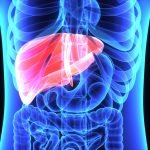Considerations in Evaluating Pulmonary Disease Among the Elderly
Aging Respiratory System
Thomas A. Kruzel, ND
The process of aging has essentially 4 characteristics: it is universal, intrinsic, progressive, and decremental. Few of the structural changes observed with aging are specifically characteristic of it because they are the result of accumulations and alterations that occur throughout life.1,2 Therefore, the question arises how much of the loss of respiratory function is due to wear and tear and how much is due to the normal aging process? Neither process is well demarcated, and they are often indistinguishable from one another. However, it is generally recognized that the accumulated effects of disease have a greater influence on the respiratory system than do age-related changes.
The respiratory system is not an isolated entity but interacts with other organs of elimination to remove toxic elements from the body and to maintain homeostasis. In particular, the lungs interact closely with the kidneys to maintain the blood pH within the narrow range of 7.34 to 7.45 needed to sustain life. Therefore, a change in one of these organ systems will affect the other as the emunctories work to maintain homeostasis.
Beginning at about age 50 years, a decline in muscle mass and the effects of repeated immune responses to environmental perturbations begin to influence respiratory function, provided there is not a preexisting genetic deficit or previous lung disease. Age-related changes affect not only ventilation and gas exchange but also the ability of the lungs to defend against toxins and invaders. Changes in lung elasticity, chest configuration, and motion gradually influence compliance and respiratory function as measured on lung function investigations. Variables such as focused expiratory volume, forced expiratory flow, functional residual capacity, and residual volume begin to show changes.2,3 These alterations progress at about a 5% to 20% decline per decade in persons who do not exercise, while decremental changes occur at a slower rate in those who exercise. In addition, the heightened rigidity of thoracic walls and a diminished expiratory force will decrease the usefulness of cough and increase the risk for respiratory infection.
As already mentioned, it is unclear whether the increasing rate of decline in ventilatory function is a result of the normal aging process or is from the effects of prior diseases, exposure to pollutants and toxins, or an abrupt and severe insult to the respiratory system. All of these lead to increasing symptoms of airway obstruction. The gradual decline in lung function that occurs from its peak at age 20 to 25 years until age 40 years is mainly due to changes in body weight and muscle strength. After this period, the rates of changes in forced vital capacity and focused expiratory volume tend to follow a somewhat linear decline but vary among individuals.2,3 Because of this variation, the rate of decline cannot be predicted based on age alone. The effects of smoking on lung function decline are well documented and will not be discussed herein.
As we age, chest anterior to posterior diameter increases, and kyphosis of the spine occurs, which leads to a decreased compliance of the thorax and expiratory force. Because chest wall compliance gradually becomes stiffer, the increased outer chest wall rigidity makes it more difficult for the diaphragm and muscles involved with respiration to counter the effects. Therefore, this results in a slight increase in total lung capacity, as well as larger increases in functional residual capacity and residual volume, or what remains in the lungs at rest.4 In an elderly patient, the consequence is a decreased flow of inspired and expired air, making it more difficult to assess airflow on auscultation.
The Aging Respiratory System and Emphysema Have Much in Common
In the aging respiratory system, some decrease in the number of alveoli occurs, with hypertrophy of others. This is especially seen in smokers or in those with a history of smoking or exposure to polluted air. Because of age-related loss of elasticity, early collapse of peripheral airways occurs, leading to decreased lung volumes and less perfusion. Aging lungs and emphysema have much in common: both are characterized by less than maximum breathing capacity and forced expiratory volume, while residual volume and functional residual capacity are increased, with the lungs becoming more rigid and distended. This change in compliance is regional rather than being evenly distributed across the lungs. The effect is to slow passive exhalation in some lung areas, while others empty normally. During quiet breathing, inspired gases will preferentially go to the more distensible upper lung areas, leading to an uneven distribution of gas exchange. Therefore, certain areas on auscultation may sound as if there is condensation, while other areas do not.1-4
Blood volume does not change with age, but the quantity of blood present in the pulmonary circulation at any given instant decreases as we age. No change occurs in arterial partial pressure of carbon dioxide, but a 10% to 15% decrease in partial pressure of oxygen occurs, while the percentage saturation decreases about 5%. This, along with an uneven distribution of airflow, may account for the increase in partial pressure of carbon dioxide and the decrease in partial pressure of oxygen. In the elderly, maximum oxygen used under stress can decrease to 50%. This is probably due to a perfusion failure and impaired oxygen use in the tissues.1,3
There is also a change with age in the epithelial lining fluid, which is abundant in antioxidant defenses that minimize oxidative injury to the respiratory epithelium following toxic exposure. Epithelial lining fluid is high in superoxide dismutase, catalase, metal-binding proteins, glutathione, and vitamins C and E. These antioxidant levels are reduced on exposure to ozone, nitrous oxide, and particulate matter regardless of age, but the ability to recharge the epithelial lining fluid changes, with production decreasing as we age. This increases the susceptibility of older individuals to environmental toxic exposure and risk for infection. Some evidence indicates an increased ability of alveolar macrophages to release superoxide anion in response to stimuli in the elderly.4 These changes likely represent the combined effect of repetitive stimuli from environmental exposure but could also be an adaptation to loss of function in an aging lung.
Notably, intravenous administration of small amounts of ozone and hydrogen peroxide seems clinically to provide some relief in patients with chronic obstructive pulmonary disease or emphysema. This is possibly due to a stimulation of the vital force similar to that experienced with homeopathic medicines, but other unexplained mechanisms may have a role.
Despite these changes, the respiratory system is capable of maintaining adequate oxygenation and ventilation during the entire life span, provided the perturbation or insult does not force the system outside of its set point margins. Because the respiratory system reserve becomes limited with age, diminished ventilatory response to hypoxia and hypercapnia renders it more vulnerable to respiratory failure during high-demand states such as with pneumonia or heart or renal failure, leading to increased risk for morbidity and poor outcomes. While this mechanism has not been fully elucidated, it is thought to be due to diminished sensitivity of peripheral chemoreceptors or decreased integration of central nervous system pathways.
Dementia May Be an Indicator of Compromised Respiratory Function
Elderly patients who are seen with an acute-onset dementia or a sudden change in their normal activities of daily living should undergo a workup for various possible etiologies, including acute pulmonary disease.1 While a change in a person’s respiratory rate is a homeostatic response to hypoxia or hypercapnia and is a useful clinical sign, these responses are muted or often absent in older patients, meaning that acute pulmonary disease may be missed. In addition, the effects of prescription medication use may influence a patient’s respiratory function and should be part of the differential diagnosis.
Because of a narrowing of the set point margins that accompanies aging and the increased difficulty of the aging person to adapt to changes in the environment, it becomes all the more important for the physician to be aware of these variations from the norm and to be more proactive when treating older patients. Naturopathic medicine has long subscribed to the importance of antioxidants and metabolic and immune system enhancement to accomplish this goal. However, while these factors are important, recent work suggests that what may be key is how much fluctuation and variation from the set point margins, as well as the organism’s ability to return to homeostasis, will affect its longevity the most.5 Regardless of the disease process, addressing the determinants of health and the hierarchy of disease progression will help elderly patients in their later years, along with an appreciation of the aging process.
 Thomas A. Kruzel, ND is a naturopathic physician who is in private practice at the Rockwood Natural Medicine Clinic in Scottsdale, Arizona. He received a BA in biology from the California State University at Northridge and his doctorate of naturopathic medicine degree from the National College of Naturopathic Medicine, Portland, Oregon. Dr Kruzel is also a board-certified medical technologist. As an associate professor of medicine at National College of Naturopathic Medicine, he has taught clinical laboratory medicine, geriatric medicine, and clinical urology. He is the author of The Homeopathic Emergency Guide and Natural Medicine Pediatric Home Health Advisor. Dr Kruzel is past president of the American Association of Naturopathic Physicians and was selected as Physician of the Year by that organization in 2000 and by the Arizona Naturopathic Medical Association in 2003.
Thomas A. Kruzel, ND is a naturopathic physician who is in private practice at the Rockwood Natural Medicine Clinic in Scottsdale, Arizona. He received a BA in biology from the California State University at Northridge and his doctorate of naturopathic medicine degree from the National College of Naturopathic Medicine, Portland, Oregon. Dr Kruzel is also a board-certified medical technologist. As an associate professor of medicine at National College of Naturopathic Medicine, he has taught clinical laboratory medicine, geriatric medicine, and clinical urology. He is the author of The Homeopathic Emergency Guide and Natural Medicine Pediatric Home Health Advisor. Dr Kruzel is past president of the American Association of Naturopathic Physicians and was selected as Physician of the Year by that organization in 2000 and by the Arizona Naturopathic Medical Association in 2003.
References
Abrams WB, Berkow R, Fletcher A, eds. The Merck Manual of Geriatrics. Rahway, NJ: Merck Sharp & Dohme Research Laboratories; 1990.
Hazzard WR, Blass JP, Ettinger WH, Halter JB, Ouslander JG, eds. Principles of Geriatric Medicine and Gerontology. 4th ed. New York, NY: McGraw Hill; 1999.
Ross BK. Aging and the respiratory system. In: Syllabus on Geriatric Anesthesiology. Seattle: University of Washington; 2012.
Sharma G, Goodwin J. Effect of aging on respiratory system physiology and immunology. Clin Interv Aging. 2006;1(3):253-260.
Olshansky SJ, Rattan SI. What determines longevity: metabolic rate or stability? Discov Med. 2005;5(28):359-362.









